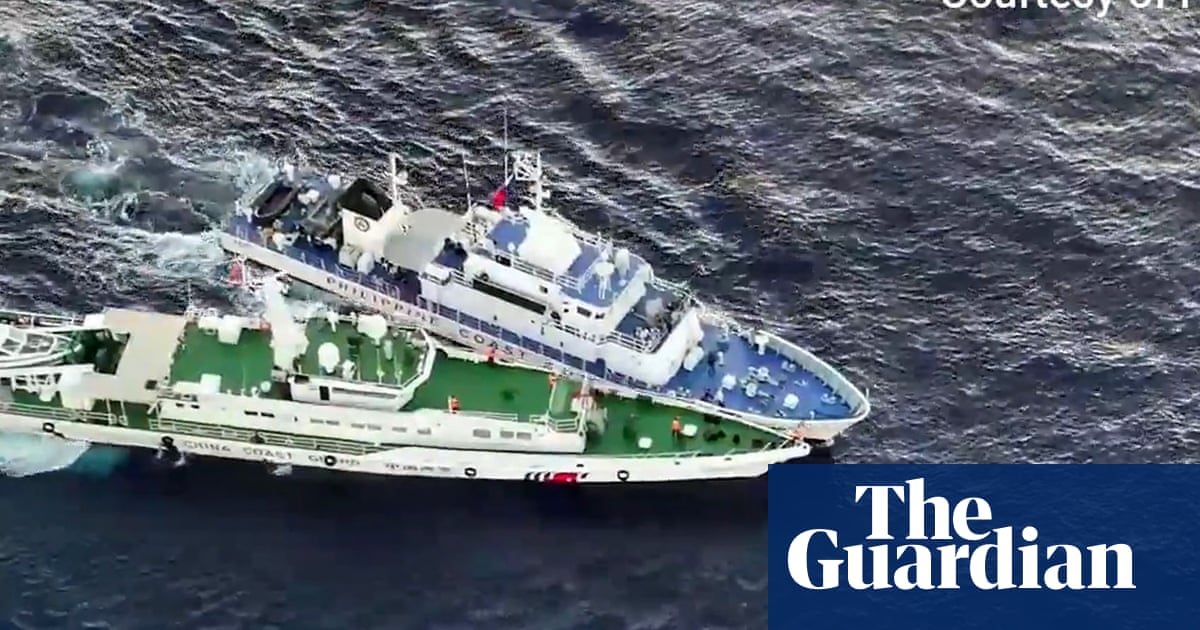
The Philippines has accused China’s coastguard of “reckless and illegal actions” that resulted in a collision that caused minor structural damage to one of its vessels in the fiercely disputed South China Sea.
Jay Tarriela, Philippine coastguard (PCG) spokesperson, said on social media that its vessels had “faced dangerous manoeuvres and blocking” from Chinese coastguard and Chinese maritime militia as they supported a resupply mission to military troops. This led to a collision that caused “minor structural damage to the PCG vessel”, he said in a statement on X.
Footage of the incident, shared by the Philippines, showed its crew rushing to place a buffer between the two Coast Guard vessels as they collided. Their Chinese counterparts stand filming the incident.
Tarriela did not state where the collision occurred. However the Philippine military had earlier Tuesday stated that it was carrying out a resupply mission to the BRP Sierra Madre, a second world war-era ship that serves as an outpost for a small contingent of Philippine troops. The rusting ship was grounded in the shallow waters of Second Thomas Shoal, a submerged reef located in the Spratly Islands, in 1999.
The Armed Forces of the Philippines said the rotation and reprovisioning of troops on the BRP Sierra Madre was “a routine task to sustain military forces deployed in the West Philippine Sea and maintain Philippine presence in its exclusive economic zone.”
China’s coastguard said on Tuesday that it had taken control measures against Philippine vessels that it accused of illegally intruding into waters adjacent to the Second Thomas Shoal.
The disputed atoll lies 190 km (118 miles) off the Philippine island of Palawan, within Manila’s exclusive economic zone, and is a major flashpoint in the South China Sea.
The Philippines has frequently accused Chinese vessels of aggressive and dangerous attempts to block its resupply missions to the shoal. Analysts have warned that, as incidents become more common, there is a risk of miscalculation that could pull the US, a Philippine ally, into confrontation with its rival Beijing.
China claims the South China Sea almost entirely, despite a 2015 ruling by an international tribunal in The Hague finding this to be without legal basis.
The South China Sea is one of the world’s busiest shipping routes, with estimates suggesting trillions of dollars in trade passes through the sea annually. It also contains oil and natural gas reserves, as well as being a rich source of fish.
China’s claim of sovereignty over most of the South China Sea cuts into the exclusive economic zones of Vietnam, the Philippines, Malaysia, Brunei and Indonesia.

